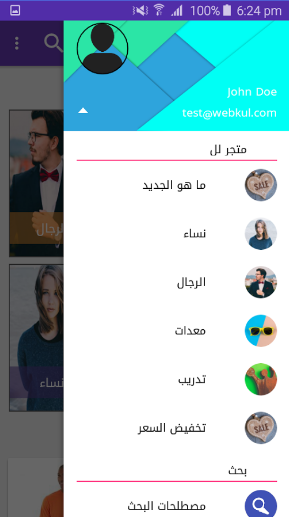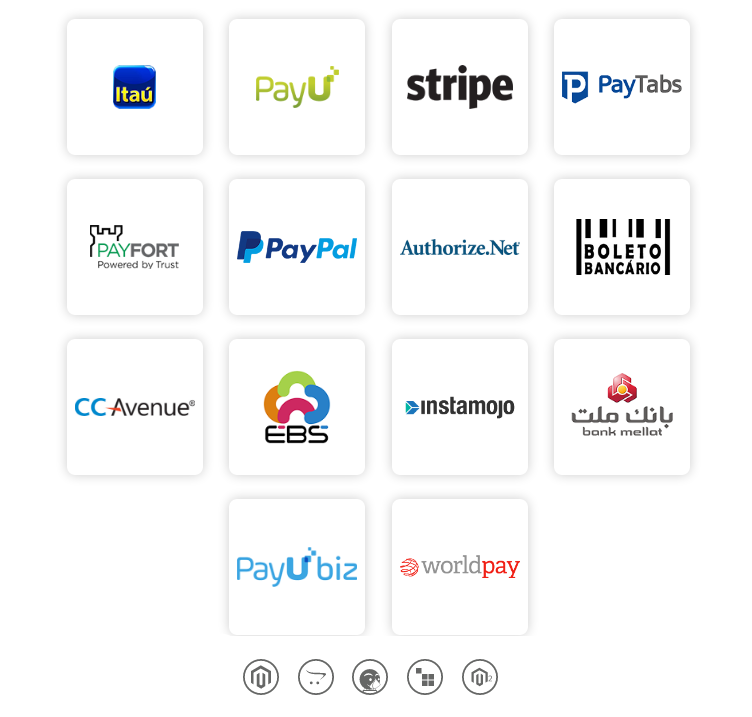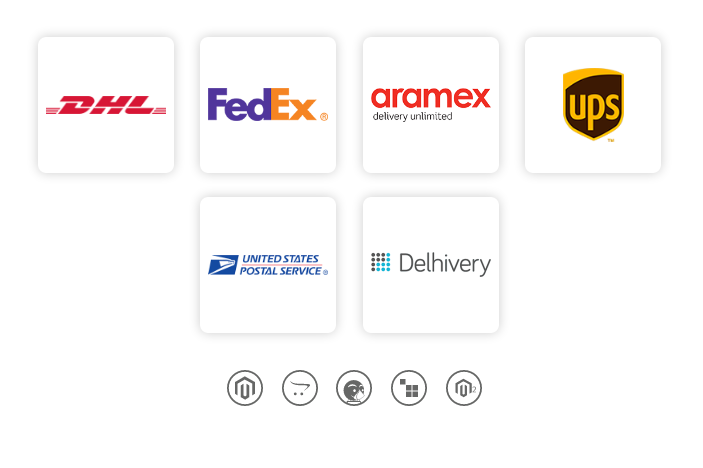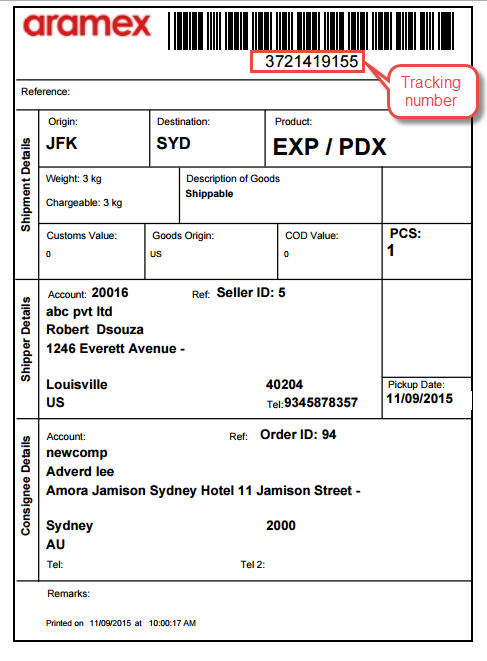We will be focusing mainly on the B2C marketplaces in this part.
What challenges does the MENA region face?
In the MENA region, there is a huge opportunity but very lesser marketplace platforms that can be utilized. This region not only presents different challenges than in the western countries, but it also holds vast opportunities for the e-commerce industry.
“Why is it so? Has the technology not yet stretched to the MENA region!”
Or is it so because this Arab population views online shopping to be a too difficult process, therefore slowing down the chances of online marketplaces to penetrate the market successfully and make an impact on the world of e-commerce.
“The MENA region is the smallest but fastest-growing region in e-commerce growth, growing at a rate two times faster than the Asia Pacific”
The marketplace disruption is still to evolve in the MENA region that can give place to other small and medium scale merchants as well.
There’s only one big player of the e-commerce industry in MENA and that’s souq.com. Apart from this one, there are some others but there is no other marketplace such big as souq.com.
There are Two Sides of the Marketplaces

To succeed in the e-commerce business you must know the difference between a horizontal and a vertical marketplace.
- Horizontal Marketplace
The horizontal marketplace is a platform where you can find products of various different categories.
You may have come across various many e-commerce businesses that follow horizontal marketplaces to sell out their products. Some examples where almost everything is sold – Amazon.com, eBay.com, flipkart.com, souq.com, & others.
In the Horizontal marketplace, the seller offers different category products focusing the buyers belonging to the various sectors. As it covers many industries it cannot cover every product in a particular category. It is a one-stop shop for various needs of customers.
For example, it is like walking into a mall with different stores.
- Vertical Marketplaces
The vertical marketplace is a platform where you can find specific category products. These businesses are specialists. Here the seller offers products in a particular category focusing the specific sector. This will cover the industry from top to bottom offering products that fall under the category.
For example, It’s like walking into a shoe showroom.
Grocery marketplaces are also missing in these vertical marketplaces. These kinds of services are missing in the MENA region and need to get started.
Major Factors to Create an Online Shopping Mall
Software
- There is a need for scalable marketplace solutions. There are a wide array of open-source marketplace solutions that can be utilized like – Magento, Opencart, WooCommerce, Prestashop, Odoo, Cs-Cart, and etc.
- Open source is something that can fill the gap. You can choose a cloud hosting service like Cloudkul, or AWS(Amazon Web Services – Gain free one-year hosting), Google cloud for hosting your website.
- All of the platforms mentioned above will work with almost all types of hosting platforms like – Godaddy, and others.
Webkul Solutions are Available
- Webkul’s products support RTL(Right to Left) and LTR(Left To Right) including the mobile apps. The localization is very high and is almost as important as building trust.
- Localization is a key in every way in terms of SEO factor.
- The Google results that are populated on a web browser are mostly the local results that are populated according to the location of the search. You surely can get the benefit out of localization by attracting any customer base either native or Arabic or the ones using LTR searches.
- Across MENA region you will have to be using the right language. Catering for each countries primary language and English is always a better strategy.
While there are a plenty of sites on which English is the main language, this doesn’t mean that all your visitors will prefer, or know English.
In MENA region mobile access is soaring high. “According to RadCliffe(2015), smartphone penetration is one of the highest in the world“.
Marketplaces are Highly Complex
The marketplaces are highly complex. Marketplaces collect the money on behalf of the sellers. In other words, when a customer makes a payment all of the payment goes to the admin in the first place.
Now, the admin can manually transfer the seller’s pending amount after deducting the commission.
For example;
We have a marketplace like – www.arabsupermart.com that has vendors V1, V2, V3, and V4 having their products P1, P2, P3, and P4. Now, when a customer C1 goes to the arabsupermart.com and adds the products P1 & P2 into the cart and makes the payment.
Now, all of the payment goes to the store owner or the admin in the first place. That’s almost how most of the marketplaces work.
That’s almost how most of the marketplaces work.
Seller payout –
Seller payout can be made after a stipulated amount of time when the order is complete. The admin can manually transfer the amount after deducting the commission.
This helps in building the trust factor with the customers. Also, the advantage of seller payout helps much in the – Refund and Claims.
For small marketplaces, there are other ways to do it which are governed by the drop-ship business model.
- In Small Marketplaces -> Commission instead of holding the inventory or the warehouses.
- That’s why everything is managed from the Vendor’s/Seller’s end.
You can check our solution for the commission in the Opencart Marketplace – Opencart Marketplace Advance Commission`system which can be used to set the commission on products and seller categories.
Admin can also use the commission rule. Admin can even set the Commission priority based on product or Seller’s categories. This module provides a fair way to apply a commission on each seller.
Features of the product –
- Admin can set commission on products.
- Admin can set commission on Seller’s categories.
- Admin can decide different commission percentage or fixed for different categories.
- Admin can decide the priority for the commission.
- Admin can set commission very easily and very fast.
- Admin can add/edit the commission rule.
- Admin can create commission rules manually or by uploading a CSV file.
Seller End
- Split the Payment
If you want that the payment from the customer should get split amongst the admin and the sellers involved you can make use of PayPal Adaptive payment solution.
As cash on delivery method is majorly used for purchasing products over the e-commerce websites in the MENA region, we have a solution for that as well – Aramex COD(Cash On Delivery) which is very popular payment method in the MENA region.
An example of Aramex Shipping label:
- Order Fulfillment Management
To manually fulfill the shipment you can choose any of the shipping modules –
- Opencart Per product Shipping,
- Opencart Table Rate Shipping,
- Opencart Fixed or Flat Rate Shipping.
For API Driven shipment you can use any of the solutions –
Multi-Vendor Mobile Commerce:
For creating the websites a large number of open source solutions exist but there are no open source solutions for the mobile platform.
“Webkul is the first in the World to create an open-source e-commerce mobile app builder – Mobikul“.
The app builder is good to have – “But does it suit my multi-vendor marketplace requirements?”
A new study has found that the customer base that is accessing the web stores through their mobile phones is much larger than the ones accessing it through the desktops.
Similarly, in the MENA region as well the mobile penetration is much at a higher level than the desktops. We have mobile app solutions for the majority of the open-source platforms.
For sure, the Mobikul app builder works for normal retail shops as well as it works for online marketplaces. You can take a look below at the open-source e-commerce mobile apps for the different platforms (Normal stand-alone stores and Marketplaces) –
Features of the Mobile Apps –
- High-End Performance
- Better Touch and Support
- Push notifications
- Offline Browsing
- End-to-End Synchronization between web and mobile, including Order, Product, and Inventory.
Does the Mobile app Support Arabic & Hebrew languages(RTL)?


Webkul mobile application – Mobikul is the first of its kind to support Arabic, Hebrew, Persian, and other right-to-left languages.
“As you might be knowing souq.com is a Multi-Vendor marketplace and very popular in the MENA region”
A list of commonly included countries and territories in the MENA region –
- Algeria
- Bahrain
- Egypt
- Iran
- Iraq
- Israel
- Jordan
- Kuwait
- Lebanon
- Libya
- Morocco
- Oman
- Palestine
- Qatar
- Saudi Arabia
- Sudan
- Syria
- Tunisia
- United Arab Emirates
- Yemen
Why is it hard to create RTL(right-to-left) based application?
The beauty of the mobikul Multi-Vendor App is that at the same time it supports RTL and LTR within the same application. Also, the main concern is not just about the language, it is the complete view and template in RTL and LTR.
- Multiple Payment Gateway Support

Our Mobikul Marketplace Mobile App supports various payment gateways which have been used by you on your eCommerce site. Your customers and your sellers will not have to bother about the payments that how they will pay for the purchases using the mobile application.
Sellers will also get all the benefits of payment gateways which they get at the Marketplace store. We would like to name few: Cheque, Bank Transfer, Authorize.Net, Cash On Delivery, Stripe, Pesapal, PayU, Paypal Adaptive, and Paypal Standard.
- Multiple Shipping Method Support

The Mobikul Mobile App will support all the shipping methods of your eCommerce Store, so you don’t have to worry about the shipping feature, it will support all the shipping methods of your eCommerce Store like – Magento, Magento 2, Opencart, Prestashop, Joomla, and CS-Cart).
Following shipping, channel are supported –
- FedEx
- Aramex
- DTDC
- United States Postal Service
- UPS
- DHL Worldwide Express
Vertical marketplaces including hyperlocal or grocery shops can use our mobile application as –
- Geolocation is Good
- The install-Chat facility is available
- Creates more trust & Increases the sales conversion
Futuristic Approach(for small-scaled businesses)
As the B2C purchasing cycle needs to be small, we can provide our customers with something that can assist them in their shopping experience.
Short for chat robot, a computer program that simulates human conversation, or chat, through artificial intelligence. Typically, a chatbot will communicate with a real person.
Now you can add the Facebook shopbot feature to your store which will provide a new shopping experience to your customers. With artificial intelligence, this technology gives complete information about the product to the customer.
Webkul provides a chatbot solution for the opencart store – Opencart Facebook Chatbot which works similarly to eBay’s chatbot.
Taxes & Accounting
It’s always a big pain to manage the taxes and accounting info related to the marketplace. To better help you with this we have some solutions for the Opencart store platform –
The integration of QuickBooks(By intuit) with your opencart store is highly effective. You just need to sell out your products and will take care of the rest of the things by synchronizing your opencart order data with QuickBooks.
Currently, we are having the Quickbooks connector for the Opencart Store and are on the way to developing it for the Opencart Marketplace.
CRM(Customer Relationship Management)
When your store is growing faster there is a need to manage a lot of information. CRM software consolidates customer information and documents into a single CRM database so that business users can more easily access and manage it.
We have CRM integration available between –
Opencart Salesforce Connector is an extraordinary module for synchronizing an eCommerce Opencart platform data to a Salesforce CRM platform. The user can easily synchronize orders, customers, products, and categories of the Opencart to the Salesforce CRM with the help of this module.
This feature helps admin to manage their store data in a better way on Salesforce CRM and provide better customer service.
Opencart ORO CRM connector is a module to synchronize your Opencart data to the ORO CRM platform. With the use of this module, you can easily synchronize the orders, customers, and products of Opencart to ORO CRM.
This feature helps admin to manage their store data in a better way on ORO CRM and provide better customer service.
If you are having an e-commerce store and you want to integrate your OpenCart e-commerce store with Odoo, then this would be an awesome solution.
Basically, this module provides two-way communication between Odoo and OpenCart, which Means you can synchronize data from OpenCart to Odoo and Odoo to OpenCart both.
Internationalization:
For a global marketplace, it’s always vital to have Global shipping and Global payment methods that can be used globally. Thus, these shipping and payment methods will be able to cater to the needs of the customers globally.
Also, this would set your sales to a soaring high as now you will be having a global customer base accessing the marketplace. You just have to build the products and then just ship them that’s it.
Some of the popular Shipping and Payment solutions that can be used are –
Shipping Solutions:
Payment Solutions:
Outlet Integration:
Integration of your physical store with your online store is always beneficial in increasing your sales over different channels. You can check Webkul’s solution for opencart store(Without the marketplace add-on) – Opencart Point Of Sale.
“We are in the process of developing the POS system for the Opencart marketplace which will be available soon”.
Features that the POS system provides –
-
-
- Inventory and Sales Management
-
The POS system will provide the advanced feature so that admin can analysis the sales reports of respective POS handlers (cashier, sales agent etc.) individually. Also, he can easily manage the inventory of online and offline store together.
-
-
- Offline mode
-
Opencart POS System provides the most valuable and unique feature so that your sales agent, cashier, etc. can work on the POS system in offline mode also. They can use all the functions and features of the POS in offline mode.
They can complete all the transactions without the use of the internet. This feature will also benefit you when you are having your store in a poor internet connectivity area or no internet area.
-
-
- Employee Management
-
The Admin can manage his employees and track their performance. He can easily create the new user for POS and can assign them the designation as the cashier, sales agent etc. as per the requirements.
-
-
- Easy Pay and easy Checkout
-
The most time-saving feature will provide your customer a hassle free shopping experience at the point of sale system. The POS user (cashier) can easily manage the long customers’ queue so that the customers will not have to wait for a long time.
-
-
- Separate POS Inventory Management
-
The admin can manage his online and offline store’s inventories separately. Also, he can choose which product he wants to enable or disable for the POS System
-
-
- Multiple Cart System
-
The Sales Agent can create multiple carts and can hold the transactions at that time. He can easily proceed to next the transactions without deleting the uncompleted order/hold order.
Support
That’s all How to Create an Online Shopping Mall in MENA(the Middle East North Africa)? for still have any issues feel free to add a ticket and let us know your views to make the module better contact us.



Be the first to comment.